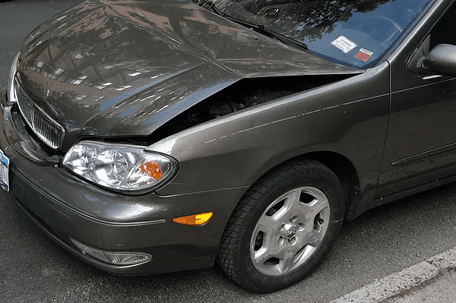A friend of mine was in a car accident last week. He was driving down one of the busier streets in town, a straight road with businesses on both sides. He was headed straight, minding the road, hands at 10:00 and 2:00, when a young lady pulled out of a gas station right in front of him. With no time to react, he t-boned her. Airbags deployed. Both cars were totaled. His neck was jarred but he didn’t think he was seriously hurt, so he declined the responding officer’s suggestion to take an ambulance to the hospital. Instead, he called his wife to pick him up and take him home.
His neck got worse that night so he took off work the next day. And although his neck wasn’t any better the day after, he went back to work, because he couldn’t afford not to. A couple days later, with no improvement in his neck, he finally decided to see a doctor. X-Rays were negative. Physical Therapy was prescribed. My friend has gone to a few sessions with no improvement.
For the last week, the insurance adjuster who’s insured was responsible for the accident has been talking to my friend about his accident and treatment, has offered settlement, and has sent him paperwork and a Release Agreement.
What should my friend do?
Should he have done anything differently?
His experience is very similar to many of the car accident cases that come across my desk. Medium-impact collision. Totaled cars. Clear liability. Invisible soft-tissue injury in the neck. And an eager insurance adjuster.
In this type of situation, there are generally steps every person can take right away to protect yourself and your interests. Here are my Top 5:
1. Take pictures, or better yet, a video. If you’re able to get your bearings after the crash and are healthy enough to walk and talk, take your phone out and photograph the scene and the damage. And don’t skimp. Get all the angles you can. And don’t forget your own bruises, cuts, and burns. Narrate the video if you'd like and feel free to record witness statements.
2. Take a Ride in an Ambulance. Immediate medical treatment is never a bad idea, especially if you’re unsure about your injuries.
3. Follow-up with a Specialist. With soft-tissue injuries, the X-Rays are going to come back “negative” and the emergency department professionals will send you home with painkillers and anti-inflammatories and a prescription for Physical Therapy. You would be wise to see a spine specialist if the pain doesn’t subside within a few days. He may order an MRI, which might show issues with your muscles, tendons, nerves, cartilage, or discs that the X-Ray didn’t pick up. He might also have recommendations for treatment.
4. Don’t Sign the Release! The insurance adjuster might seem friendly and interested in your welfare, but DO NOT sign any Release or Agreement settling your claim while you’re still treating. The adjuster will be eager to settle as quickly as possible. You might also be eager as medical expense grow, but once you settle that number is final. If you are still receiving treatment your claim may be worth much more than what the insurance company is offering.
5. Hire a Personal Injury Attorney experienced in car accident cases.
Most Personal Injury Attorneys don’t charge anything up front to
represent you. They work on a contingency basis meaning if you don't
get paid, they don't get paid. An experienced personal injury attorney
will know exactly what to do to maximize the value of your case and get
you a good settlement.

